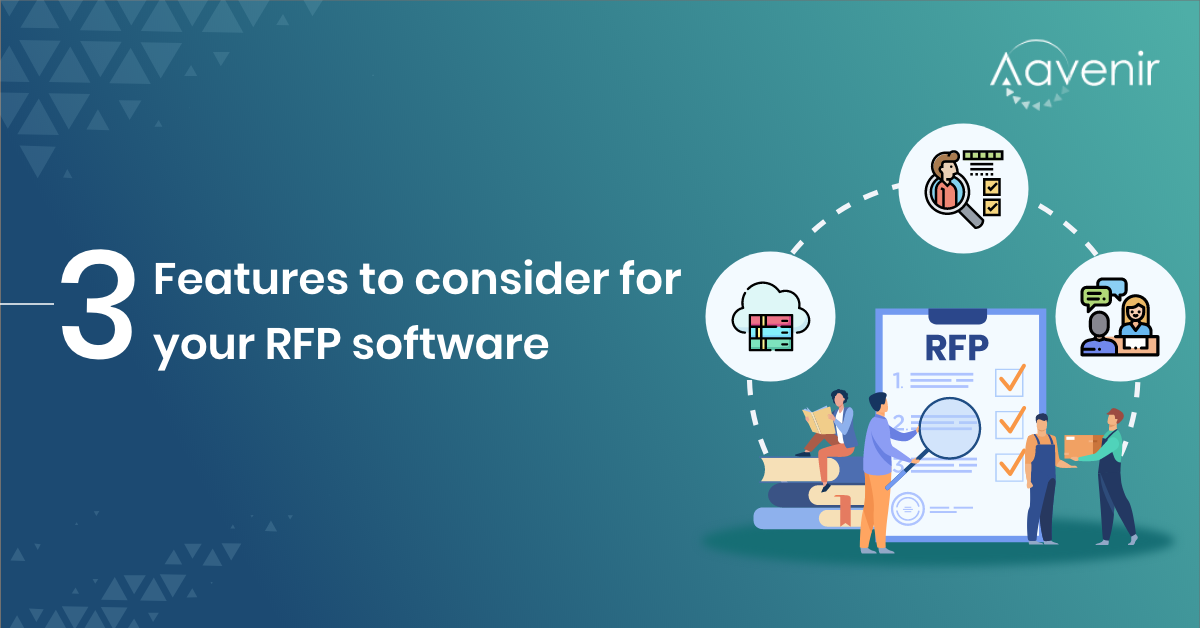As the pandemic swept the globe, the disruption to supply chains was sudden and dramatic. These disruptions have highlighted the critical roles that strategic sourcing, procurement, and supplier management play in organizational agility and enterprise resilience.
By automating procurement, sourcing teams can standardize and ultimately perform at optimal levels. In fact, Gartner’s Predictions Survey shared that increased productivity was the second reason for investing in strategic sourcing tools. What was number 1? Transformation. Why is that, most sourcing teams lack the real visibility needed to capitalize on sourcing opportunities, let alone scale with the enterprise.
Identifying quality suppliers for the ongoing procurement need at the right price is Holy Grail for any procurement team. Many procurement professionals attest that RFPs act as the backbone of indirect material sourcing and effective supplier management. Strategic procurement initiatives such as target savings, supplier base rationalization can be achieved using effective RFPs. An effective RFP solution is needed to solve the procurement challenges and deliver immediate ROI.
So, how do you know to decide the right RFP solution for your procurement team? Which features can provide them with lasting benefits?
Top 3 RFP Software Features to Focus On
When you’re on the hunt for an RFP solution to make your sourcing process easier, there are a few features you need to consider. However, when you dig a little deeper the features will help determine which is the best fit for your team. So, let’s explore each of these three key features that deliver the most value to your RFP preparation process.
1. A Powerful Knowledge Library
RFP software should start with a powerful knowledge library. The knowledge library is the core of your RFP software. It absolutely must be easy to add to, organize and search. When evaluating the knowledge library it’s crucial to consider: Searchability, Extensions, and Integrations, as well as Trackability and Access.
- Searchability: For RFP creation teams, one of the biggest challenges is finding previously-used content. Leveraging existing content saves a ton of time when preparing an RFP. Therefore, the knowledge library where that information is stored must be highly organized.
- Extensions and Integrations: From time to time you may need to find information outside of your RFP preparation software. Likewise, you may need to leverage information from the knowledge library when you’re working in other programs. This means that integrations and extensions are key to getting the most value out of your RFP management system.
- Access control and traceability: Ideally, the knowledge library centralizes all of your RFP content, making it easy to find and use. However, in the real world, not everyone in your business should have unrestricted access to all of the information contained there. That is why data trackability and access control become vital when considering the right RFP software for your business.
2. Supplier Communication
Sourcing teams are always rushing to meet deadlines to publish RFPs to existing suppliers and potential suppliers. During their RFP publishing stage, the sourcing team is overwhelmed with queries from these suppliers and rushing to meet RFP deadlines. The automated digital workflow in the RFP solution helps procurement managers to manage deadlines to get alerts and notifications for each milestone during the RFP process.
RFP solution acts as a collaborative platform, which allows users to automate the exchanges of technical data and specifications and the communication with suppliers. Thanks to this solution, it is easy to verify information and documents submitted by each supplier, manage communication with these suppliers, compare proposals and select the most suitable suppliers.
3. RFP Evaluation
This feature helps internal stakeholders to provide quantitative scores for individual supplier responses. RFP solution will collate the quantitative score across stakeholders based on the weightage assigned in the Questionnaire stage. The strategic sourcing product – RFPflow delivers a side-by-side comparison of vendor responses to provide evaluators with a panoramic and granular overview of various interested vendors. This scoring method helps organizations to achieve streamlined strategic sourcing within organizations and meet deadlines. While conducting supplier evaluation, it is essential to ensure that the organization is making the best decision based on objective input without any biased opinion or favoritism. Maintaining an audit trail is equally important as it records each event or procedure to provide support of evidence in any future conflict.
The Solution: Aavenir RFPflow on ServiceNow Digital Workflow Platform
Managing your RFPs on ServiceNow can streamline your strategic procurement processes and enable a Source-to-Contract suite within an organization. This will help to improve integration, faster RFx-to-award cycle time, and achieve budgeted savings.
Built on an industry-leading ServiceNow platform, Aavenir’s RFPflow helps to streamline the enterprise purchase workflow and simplifies the RFPs/RFQs/RFIs cycles that are aligned to the ServiceNow platform.



